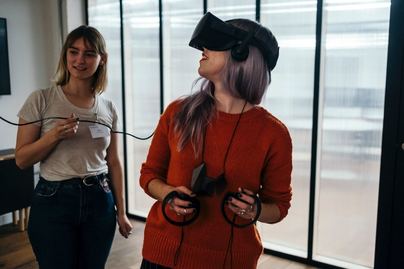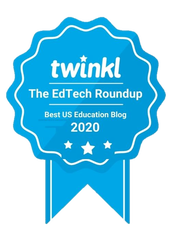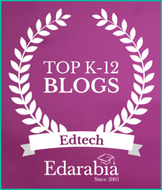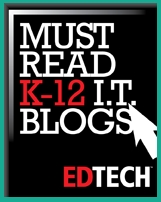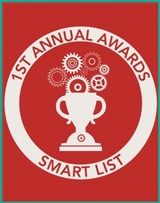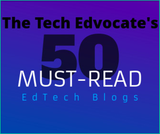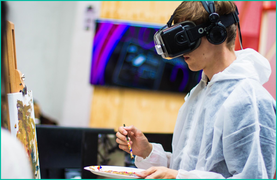
So, what can you do with VR? This immersive technology, when combined with haptic gloves, is a powerful tool for both visual and kinesthetic learners. It gives students new ways to learn information, express their analyses and perspectives, and collaborate with their peers.
The Power of Immersion
But learning opportunities don’t end with the sciences. Virtual tours, sometimes called “virtual field trips,” let classes explore historically significant locations, museums, or other locations across the globe in the modern world. This can help students connect with events from the past, learn the historical context of key works of literature, and gain an understanding of other cultures. Products like Nearpod aim to give teachers control over where their class’s journeys go in real time.
New Avenues for Creative Expression
One example of a product that can give learners the tools to use VR in this capacity is CoSpaces. This application allows users to easily create 3-D worlds, fill them with premade or custom models, and give peers a tour of their creation.
These opportunities not only give students new ways to express ideas, but they endear students to the technology involved. This can be integral for individuals or demographics that have historically been discouraged from engaging with tech. As women continue to play a more prominent role in the tech sector, moments like these can be transformative to young minds.
Collaborating in Virtual Reality
Within the next few years, educators can expect to find VR applications, like remote conferencing software, multiplayer educational games, training simulations, and interactive art installations, that allow users to engage in a virtual world together simultaneously. We may even see virtual football training in high schools in the near future. These applications will solidify VR’s place in the classroom.
Note that, in each of the activities listed above, VR contributes to learning in a way that aligns with educational goals and best practices. It can help with interpreting information, content creation, and peer collaboration. But what if a product doesn’t seem to align with these goals?
Avoiding Dead-End Distractions
- The technology does not align with educational goals: As outlined above, a product needs to serve an explicit educational purpose before you can justify bringing it into the classroom. Don’t get sold on tech demos; determine exactly how a product will fit into your instruction before implementing it.
- It is unproven or has not yet been widely adopted: When it comes to cutting-edge edtech, you are bound to run into some untested, possibly inefficacious products. Look for products that have seen widespread usage or are from a proven developer. These are more likely to see continued support into the future.
- The learning curve of the product isn’t too severe for your students (or for you): While VR can be exciting, some applications can be too advanced or inaccessible for most K-12 students — or even teachers. Accessibility is a key consideration when selecting a new VR product for your classroom.
- Prioritize student safety and security over innovation: New technology means new security vulnerabilities. Any new platform or device that connects to the internet may create new opportunities for cybercrimnials to access student information. And, as data breaches become more common, teachers have an obligation to use best practices for securing this information.
Virtual reality is a rapidly growing industry, and education will continue to see transformative innovations as a result. It will also see a rise of thirsty marketers selling VR products of questionable worth. Keep an eye on the industry for truly revolutionary changes, but don’t let VR implementation sidetrack your students’ progress.
About the Author:
Bob Hand is a blogger from Boise, ID. He studied English with an emphasis on Secondary Education at the University of South Carolina, and continues to keep a pulse on current issues in education. His hobbies include reading and collecting vinyl records. You can follow him on Twitter @bob_hand567.

